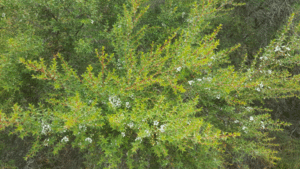
One good indicator of site suitability for establishing a plantation will be an area where populations of Leptospermum (of nearly any species) already exist within a reasonable distance and in a similar area. Whilst this is desirable as a starting point, it is by no means essential.
The average rainfall will need to be relatively high or there will be irrigation available say for example in the Murray Darling Basin irrigation areas such as Sunraysia, the MIA etc. Drier areas throughout Australia, say like the Wheatbelt are considered suitable provided there is available water for irrigation. (see Developing a plantation in the drier inland regions of Australia)
Leptospermum must have adequate moisture in the root zone leading up to, and during, the flowering period in order to produce a reasonable nectar flow
High rainfall areas used for agriculture are well suited and there may have some sort of beneficial fertiliser history. This is not essential but considered a bonus. Gently sloping sites are preferred but not essential.
These species do not require good soil. In fact, they will grow quite happily in poor and impoverished soil. Wet areas where there is a high water table or areas subject to periodic inundation may also be quite suitable.
The land will need to be clear of all trees which it would be if has been used historically for agriculture. Tree canopies provide shade over the Leptospermum which will significantly reduce flowering. These plants require full sun for that reason nor do we need them elongating seeking full sunlight and going woody in the process. In addition, the dominant tree roots unfairly compete for moisture and nutrients. All in all not good.